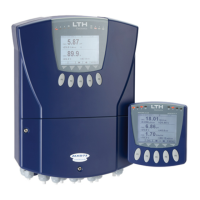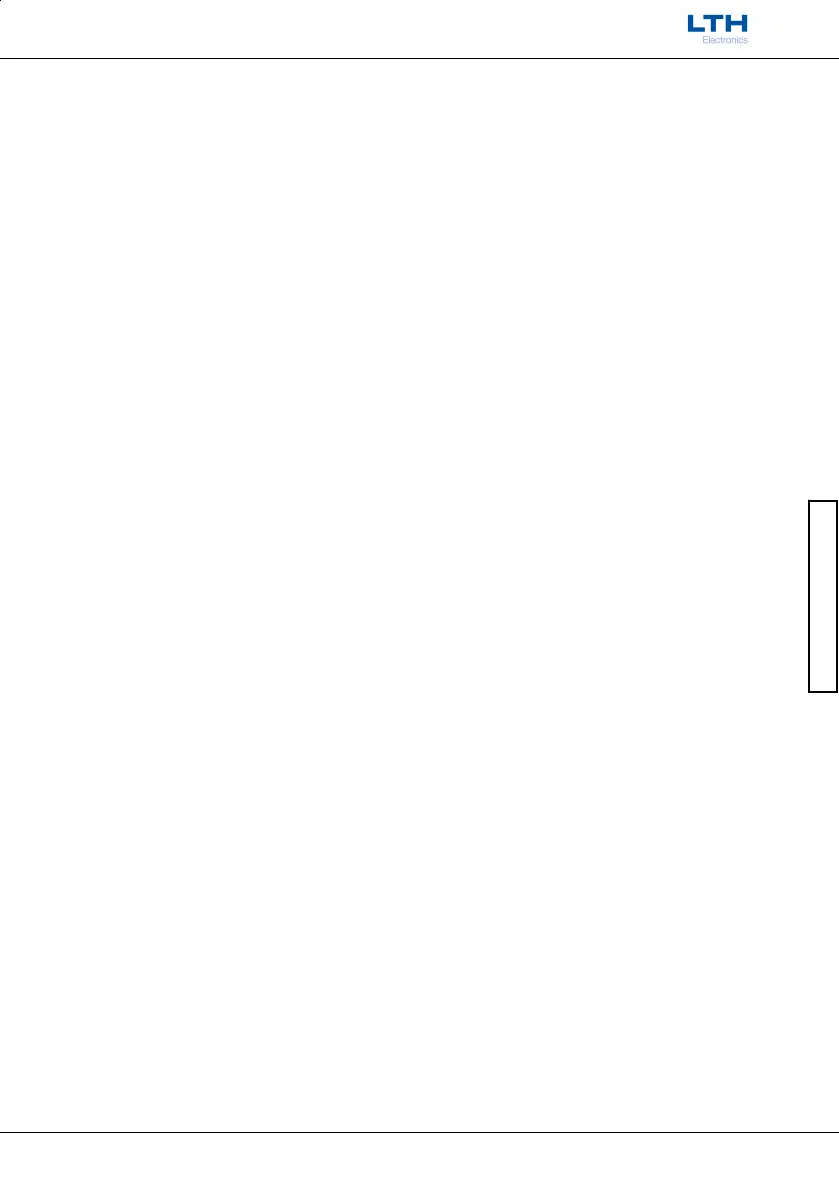Channel Calibration
MXD70 Conductivity Setup and
Operating Guide
- 21 -
Channel Calibration
Calibration
Best Practice for Fine Tuning the MXD70 Series Conventional Conductivity Input
The MXD70 provides a facility for the operator to fine tune the calibration of the conductivity or
resistivity measurement, the temperature measurement and the current output. The amount of
adjustment is quite small because the factory calibration is accurate and with modern electronics, drift
is very low. If it is found that during a calibration there is insufficient adjustment then it is probable
that there is a problem with either the calibration procedure, or a fault with the instrument, sensor or
cabling. The most common causes of inaccurate conductivity readings are contaminated electrode
surfaces and air trapped within the cell. Both of these will always give a low conductivity (high
resistivity) reading. Refer to the sections in this Appendix on Care and Maintenance and Installation of
Conductivity Cells for more information.
Calibration of Conductivity or Resistivity Readings
Conductivity measurements are very temperature dependent so it is essential that an understanding
of the complex relationship between conductivity and temperature is understood when calibrations
are made. It is possible to make several different types of calibration.
Resistance calibration of the instrument only
This is the most accurate method of calibrating the instrument but it will not take into account any
variations due to the cell constant variation or coatings of contaminants. Calibration is at a single
point only so a value close to the normal operating conditions is preferable. The resistance should be
connected between the C and E terminals. (See the table of values on page 22). It is recommended that
any extended lengths of cell cable are left in during this calibration, as cable resistance will have some
effect on the overall calibration accuracy. This is increasingly significant at high values of conductivity
(low resistivity).
The temperature compensation must be switched out when making these adjustments and the
relevant cell constant noted. The resistance accuracy will determine the overall accuracy of the
calibration. A non-inductive resistance must be used below 100 ohms.
LTH can provide a conductivity simulator with traceable certification to perform this calibration. A
table of values for specific calibration points is given on page 22.
Calibration with Standard Solutions
This calibration must be carried out under strictly controlled conditions due to the temperature effect
on conductivity measurements and the possibility of contamination of the standard solution. The
advantage of this calibration method is that the sensor and cable are an integral part of the calibration.
LTH strongly recommends a lower limit of 500μS/cm for this type of calibration. Conductivity is a very
sensitive measurement and even trace contamination of the standard solution will be detected, for
example exposing the solution to air will add 1μS/cm to the standard solution due to absorption of
CO
2.
Most standards are made up from a solution of KCl dissolved in high purity water. BS EN 60746-3
provides details of the concentrations of KCl necessary to produce industry standard conductivity
solutions. Ready made solutions are available from LTH with traceable certification if required.
Standard solutions will be supplied with a conductivity value quoted at a reference temperature. This
temperature is the base temperature and the calibration should be performed at that temperature,
with the temperature compensation switched out. Alternatively, the temperature compensation
should be switched on and a temperature slope and base temperature equal to that of the calibration
solution can be used to configure the instrument. For example this would be 1.76%/°C for a KCl
solution between 1000 to 10,000μS/cm. For more details on calculating the slope of a different
solution, refer to Appendix B - Temperature Coefficient (page 35).

